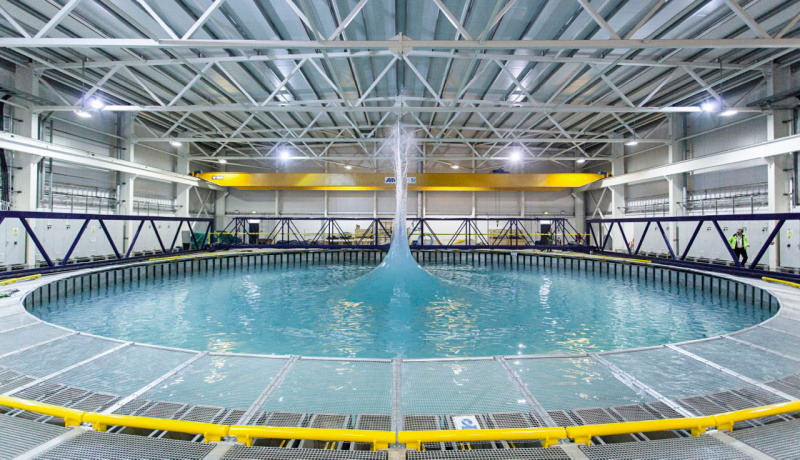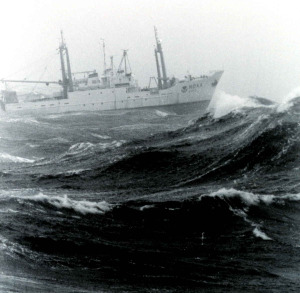
The Science of Chaos: Predicting Rogue Waves on the High Seas
by Yoanna Hoskins, age 14

Rogue waves are abnormally big, dangerous waves that can appear with little to no warning in any weather conditions. For example, the sea can be filled with waves that are 11.8-meters tall but then a rogue wave can appear and be 26-meters high, 15 meters taller than the other waves surrounding them. New research may help save lives from this rare phenomenon.
Even though these dangerous swells don’t occur often they can destroy a variety of ships and sea installations. Some experts estimate that rogue waves may have claimed more than 500 lives between 1950-2000.
Scientists have two theories regarding rogue waves and how they form. The first is based on a linear model. This theory states that when multiple waves at their peaks combine, a large, and more dangerous swell is created, a rogue wave.
The linear theory only accounts for some of the observed rogue waves. So scientists developed a 'non-linear' theory to fill in the gaps. According to that theory waves can give each other energy outside of peaks, resulting in rogue waves.
For a while, scientists debated which theory was correct. But now it seems clear that both are needed. Amin Chabchoub, a professor of environmental fluid Mechanics at The University of Sydney, reviewed the research and found that “the dominant mechanism at play depends on the situation.”
But some mathematicians and scientists have taking a different approach, sidestepping the debate entirely.
Eric Vanden-Eijnden, Professor of Mathematics at New York University, developed a new model with a team of researchers. They used a type of mathematical equation called large deviation theory (LDT) that specializes in calculating random and rare events. They argue their model is the best way to predict rogue waves in computer simulations and beyond.
Miguel Onorato, a physicist at the University of Turin in Italy, used wavemakers to test out LDT in real world simulations. The rogue waves were exceptionally rare, but the 300 that formed were predicted by the LDT model.
Scientists hope to use this process in practical technology to predict rogue waves. In the future it may be possible to use the LDT model to give researchers, and even ship captains, a tool that could work reliably in the physical world. In the near future, machines using LDT may help warn sailors of rogue waves before they happen, allowing them to take steps to avoid or overcome them, saving lives.
[Sources:
Quanta Magazine
;
Nature; NYU
]

